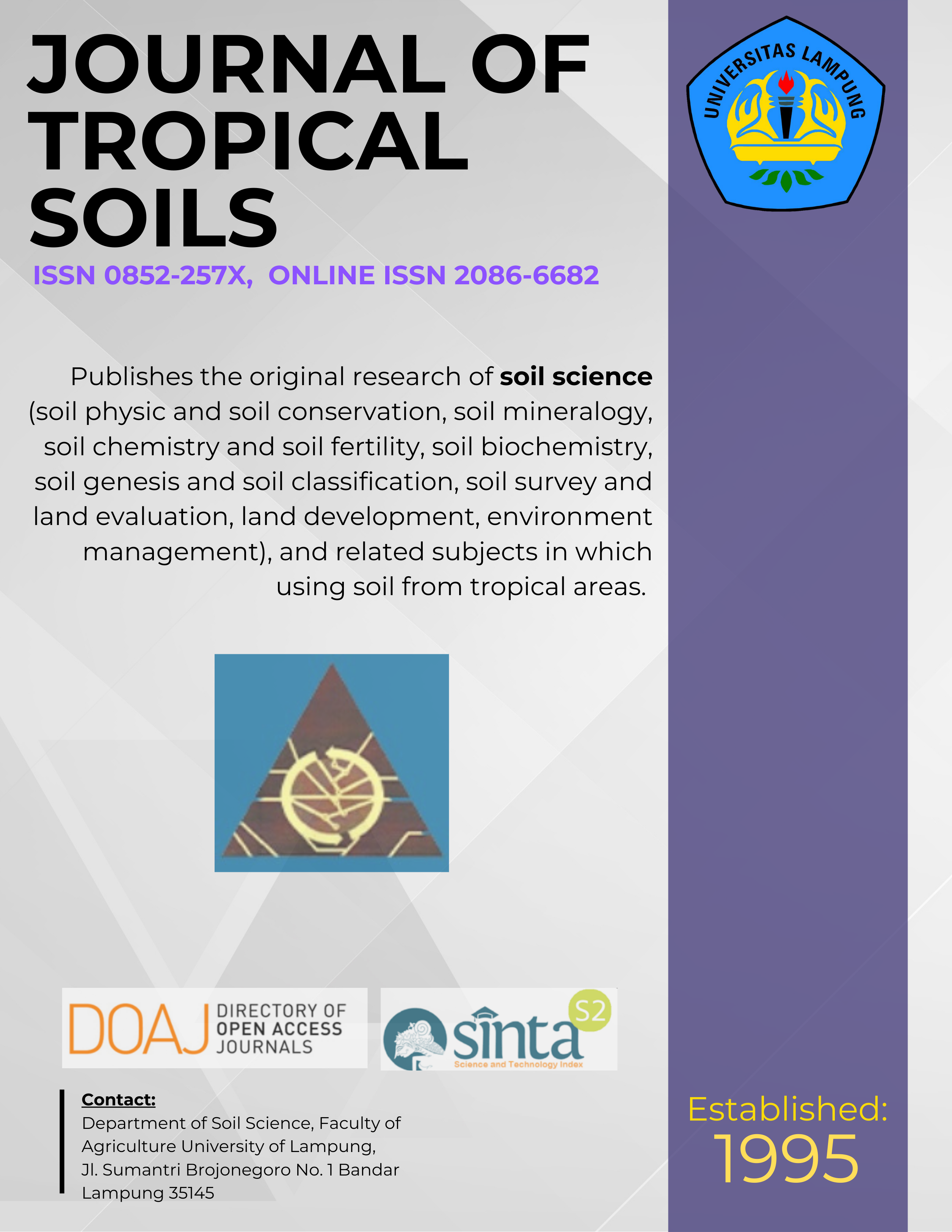The Properties of Humic Acids Extracted from Four Sources of Organic Matters and Their Ability to Bind Fe2+ at New Established Rice Field
Main Article Content
Abstract
The Properties of Humic Acids Extracted from Four Sources of Organic Matters and Their Ability to Bind Fe2+ at New Established Rice Field (Herviyanti, TB Prasetyo, F Ahmad and Darmawan): In order to identify the properties of humic acid extracted from four kinds of organic matters (a peat soil, a stable manure, a compost of rice straw and a municipal waste) and their potentiality to bind Fe2+ at new established rice field, a series of experiment was done in Soil Laboratory Faculty of Agriculture, Andalas University Padang. First step was characterization of functional groups and other chemical properties of humic acids, and their reaction with Fe2+. The second step was to examine the ability of humic acids to bind Fe2+ solution at new established rice field by conducting incubation experiments. The experiment used a completely randomized design with three replications. The 450 ppm Fe solution was treated with 0, 50, 100, 150, 200, 250, 300, 350, 400, and 450 ppm humic acids and incubated for 24 hours. While top soil samples taken from Sitiung, West Sumatera were treated with 0,100, 200, 300, and 400 ppm humic acids, flooded with deionized water, and incubated for 6 weeks. The result showed that  the functional group and other chemical characteristic of humic acid from rice straw compost and peat soil were better than those of manure and municipal waste compost. Functional group of both humic acids was dominated by COO-. High reactivity of the humic acid had been found when humic acids were added to Fe solution with ratio 1 : 1. Use of humic acid extracted from peat soil with the levels from 0 to 100, 200, 300, and 400 ppm decreased the Fe2+ concentration from 1.361 ppm to 910, 860, 831, and 776 ppm, respectively at new established rice field. While the use of humic acid extracted from rice straw compost with the same levels as above decreased the Fe2+ concentration from 1361 to 770, 701, 612, and 600 ppm, respectively, after four weeks of flooding.
Downloads
Download data is not yet available.
Article Details
Section
Articles
License for Authors
Authors who publish with this journal agree to the following terms:
- Authors retain copyright and grant the journal right of first publication with the work simultaneously licensed under a Creative Commons Attribution License that allows others to share the work with an acknowledgement of the work's authorship and initial publication in this journal.
- Authors are able to enter into separate, additional contractual arrangements for the non-exclusive distribution of the journal's published version of the work (e.g., post it to an institutional repository or publish it in a book), with an acknowledgement of its initial publication in this journal.
- Authors are permitted and encouraged to post their work online (e.g., in institutional repositories or on their website) prior to and during the submission process, as it can lead to productive exchanges, as well as earlier and greater citation of published work (See The Effect of Open Access).
License for Regular Users
Other regular users who want to cite, distribute, remix, tweak, and build upon author’s works, even for commercial purposes, should acknowledge the work’s authorship and initial publication in this journal, licensed under a Creative Commons Attribution License.
How to Cite
The Properties of Humic Acids Extracted from Four Sources of Organic Matters and Their Ability to Bind Fe2+ at New Established Rice Field. (2018). JOURNAL OF TROPICAL SOILS, 15(3), 237-244. https://doi.org/10.5400/jts.2010.v15i3.237-244

